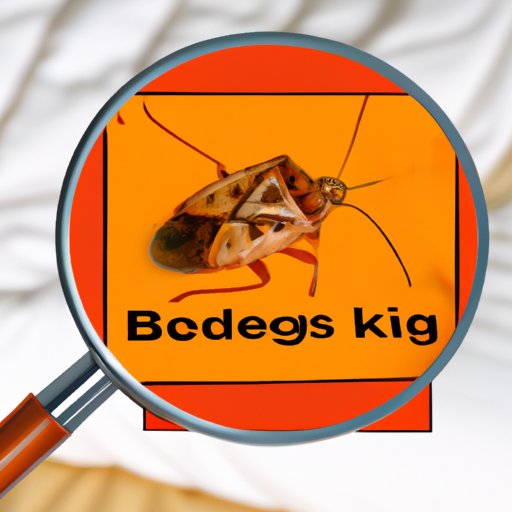Introduction
Bed bugs have become a pervasive problem in recent years, and their prevalence makes identifying an infestation in your home more important than ever. Knowing how to tell if you have bed bugs can mean the difference between a minor issue and a full-blown infestation.
This article will provide a comprehensive guide to help you understand the physical signs of bed bugs, common hiding places to check, and effective methods for detection and prevention. By following the advice outlined below, you can take proactive steps to protect yourself and your home from a bed bug infestation.
Identify Physical Signs of Bed Bugs
One of the most straightforward ways to tell if you have bed bugs is to look for physical signs left behind. These signs can include bloodstains on your sheets and mattress, shed skins, and even dead bed bugs in your bedding or nearby areas.
Another sign to look out for is skin reactions to bed bug bites. While everyone’s body reacts differently to bed bug bites, common symptoms include red, itchy bumps or welts that can appear in rows, typically on the arms, legs, or neck areas.
Check Common Hiding Places
Bed bugs are tiny and like to hide in small crevices, so it’s important to check common hiding places in your home for any signs of infestation. This includes checking the seams of your mattress, bed frame, and headboard for any signs of bed bugs or their shed skins.
Other common hiding places include furniture, electrical outlets, and baseboards. It’s also essential to check linens, curtains, and carpets for any small bloodstains or discarded shells that may indicate bed bug activity.
Use Interceptors to Determine Bed Bug Activity
Interceptors are an excellent way to determine if you have bed bugs as they work by trapping bugs that try to climb up the legs of your bed. These devices work essentially like cups that fit under the legs of your bed frame and prevent bed bugs from reaching your mattress or furniture.
While interceptors may not tell you precisely where the bed bugs are hiding, they can alert you to their presence if they are active around your bed. You can purchase interceptors online or at home improvement stores and set them up easily at home for ongoing monitoring.
Bring in a Bed Bug Detecting Dog
A bed bug detecting dog is a dog specially trained to detect bed bugs through scent. These dogs can be a more reliable and effective way to detect bed bugs than people can with their eyes because of their heightened sense of smell. The dogs will alert their handlers to the presence of bed bugs, and the handlers will then pinpoint the location of an infestation.
If you’re considering hiring a bed bug detecting dog, make sure to look for a reputable handler or service provider with good reviews. Professional bed bug sniffing dogs can be expensive, ranging in price from several hundred to several thousand dollars, but the peace of mind that comes with an accurate inspection is priceless.
Use Traps or Monitors
There are several types of traps and monitors available on the market that can help detect bed bugs. These tools work by luring bed bugs into a sticky surface or trap, allowing you to quickly identify areas where bed bugs are active.
Some traps are designed to fit under the legs of your bed, similar to interceptors, while others can be placed around your home wherever bed bugs may be likely to hide. Others use heat or carbon dioxide to attract bed bugs, making them an effective way to detect infestations.
Get a Professional Inspection
If you suspect you have bed bugs in your home, the most effective way to confirm an infestation and develop a treatment plan is by hiring a professional pest control expert. Professional pest control companies have the expertise and knowledge to identify the source of the bed bug infestation and develop a customized treatment plan tailored to your specific needs.
A professional inspection may also be required if you live in a multi-unit building or rental property, as certain laws may dictate that a qualified inspector must confirm the presence of bed bugs before a landlord can take action to treat the infestation.
Conclusion
Bed bugs can be a frustrating and unpleasant problem to deal with, but knowing how to identify and detect infestations can make all the difference in mitigating their impact on your home and life. By following the tips and advice outlined above, you can take proactive steps to prevent and treat bed bug infestations, keeping your home comfortable and bug-free for years to come.
If you suspect a bed bug infestation in your home, don’t hesitate to reach out to a professional pest control expert to help you identify and develop a treatment plan suited to your needs.
